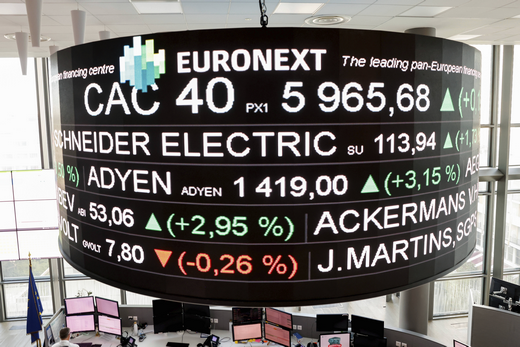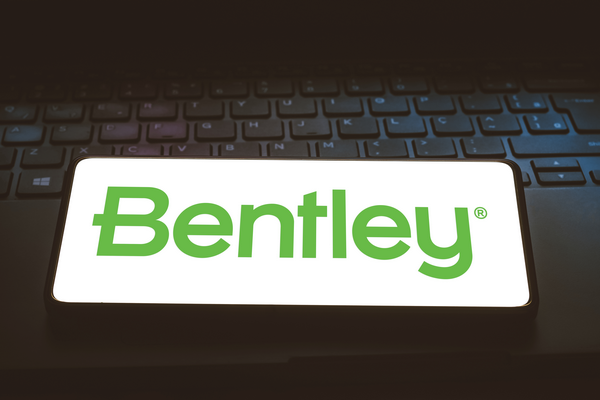Cet article a été initialement publié en mai 2016.
TRANSCRIPT
Jeremy Glaser: Investors have been struggling with how to navigate the low-yield environment for quite a while now. And even if the Fed does raise short-term rates slightly in December, we're going to be in a low-yield environment for years to come.
So, what are investors who need a stream of retirement income to do? Do they take on more risk? Do you rely more on capital gains?
I spoke to several Morningstar experts to get their takes on the opportunities and pitfalls in income investing today.
Christine Benz: The risk of looking to a portfolio to provide a stable stream of income is that prevailing yields buffet around quite a bit, and so you may be forced to venture into riskier and riskier securities to get the payout that you're looking for. I think a better idea for most investors, especially retirees, is to plan to be opportunistic about where they go for income. In some good years, they may be able to get all the income they need from their dividend-paying stocks and from their bond yields. In other environments--like the current one--I would argue it pays to be opportunistic and think about how maybe I'm getting some of my income from my portfolio, but I may also have to do a little bit of rebalancing--trim some of my highly appreciated equity positions and use that to make up the shortfall if my income, alone, isn't insufficient.
Glaser: One area in which many investors have turned to generate an income stream is dividend-paying stocks. I talked to Morningstar's Josh Peters about some of the risks in dividend investing and also what some of his favorite stocks are today.
Josh Peters: In that 3% to 4% or 4.5% range--right now my portfolio is right around 4%--I think that's the sweet spot. You're still going to get safe dividends as well as dividend-growth potential that's going to exceed inflation, and you're not exposing yourself to as much risk that earnings growth comes up short or the risk that the market figures out that the earnings growth is not there and we stop seeing this capital appreciation in the absence of earnings growth that we've had over the last couple of years. To me, the best way to ensure that you at least get a mid-single-digit return is to start with a mid-single-digit dividend yield.
If you're going to pursue income, interest-rate risk is something I think you're just going to have to be willing to accept, but it's a trade-off. The inverse of interest-rate risk--you may think of it this way--is economic risk. And if you own these defensive companies with higher dividend yields but more-secure cash flows, they may not have as much upside potential in a faster-growing economy that would correlate with higher interest rates; but if the economy goes south, these are the companies that are going to preserve their dividends and probably continue to raise them even as more-cyclical companies are seeing significant share-price decline. The key point is to make sure you're not overpaying for stocks. Make sure you're paying attention to valuations and getting dividend yields that are consistent with the kind of growth that you can expect in a normalized interest-rate environment.
One of my favorite high-yield names right now is Ventas (VTR). They are one of the largest REITs that specializes in healthcare real estate, and the largest piece of their portfolio is senior housing. There has been some concern this year that has had an effect on all of the players in the industry that perhaps senior-housing developers have overbuilt and there is a little bit of excess supply. It has driven Ventas down quite a bit and driven that yield up in tandem. But this is one of those situations where if there is some cause for a concern, first you look to the margin of safety. The dividend is very well covered. The balance sheet is not overstretched or overleveraged. The bulk of the company's cash flow is still locked up under triple-net leases. They do have some owner-operator exposure, but not so much that the dividend is at risk. So, in the case of Ventas, I think you can count on that dividend yield that you're getting upfront. I still think you're looking at mid-single-digit dividend growth or better over the next five to 10 years. So, that's really a very strong total-return prospect for a stock with these yield and risk characteristics.
Glaser: A proliferation of dividend ETFs has made it easier than ever for index investors to access dividend payers. But as Ben Johnson warns, not all of these products are created equal.
Ben Johnson: There's a huge number of dividend-oriented ETFs available to investors on the market now, and it has become increasingly difficult to really separate wheat from chaff in this space. So, one of the first things we really anchor on is one of the most explicit and one of the most powerful data points we have at our disposal, which is the fee. If there's anything we know, it's that lower fees yield greater odds of success. So, one of the first sorts we do when we're examining dividend-oriented ETFs is to rank them in ascending order by fees, and we tend to favor lower-fee funds.
One of our longtime favorite dividend-oriented ETFs is the Schwab US Dividend Equity ETF (SCHD). SCHD passes the fee screen with flying colors. It charges a rock-bottom fee. And above and beyond that, it's got a very intelligently designed benchmark. So, the index underlying this ETF sorts its universe looking for steady dividend-paying firms that are of the highest quality and have the greatest odds of growing their dividend with time.
If you're going to look for dividend-oriented ETFs that are looking for higher-yield stocks in any way, shape, or form, make sure that that's not the start, middle, and end of that index methodology. There are some great ETFs out there--including the Vanguard High Dividend ETF (VYM)--that go multiple steps further to ensure that not only are you getting high-yielding stocks but you are getting high-yielding stocks that might just temporarily be out of favor. So, they are looking at additional criteria to screen out the falling knives and to focus on higher-quality high-yielding names.
Christine Benz: We've certainly seen a lot of investors gravitate to dividend-paying stocks--and there's a lot to like about them. But investors should remember that the risk profile is completely different from bonds. So, you shouldn't supplant your fixed-income holdings with dividend-paying stocks because the dividend-paying stocks--even a high-quality basket of them--is going to have a lot more volatility than what will come along with a high-quality bond portfolio.
Russ Kinnel: Intermediate-bond funds are going to have less credit risk and less interest-rate risk than your high-yield funds, but those risks are still there. You have to appreciate that even an intermediate fund is going to lose a little in a rising-rate environment. So, there's certainly still some downside there as well as some modest upside.
One of my favorite intermediate-bond funds would be a fund like Scout Core Plus Bond (SCPYX). It's an interesting fund in that it's kind of an advantageous value strategy. They are currently a little wary of interest-rate risk, so they've got a little less interest-rate risk than your typical intermediate-bond fund. But when an area sells off, they usually jump in and buy with both fists. So, it's kind of an interesting mix of aggression and caution.
Another one I think is relevant is good, old PIMCO Total Return (PTTDX). It's still a good fund that's very good at moving around interest rates--not that they are going to be free of interest-rate risk, but it's still a really good fund. People are still redeeming it a bit, but I think it's worth mentioning that it's still a very solid fund with a great team of analysts and managers that serve that fund.
Bank-loan funds and high-yield funds offer a nice yield and some protection from rising rates, but you have to understand the downside. Recently, they've both had about a 4% correction. That's the sort of correction that happen every couple of years. But if you go back to '08, you see that bank-loan funds lost about 29% on average and high yield lost about 25% or 26% on average. That's the kind of event that happens every seven or eight years, and you have to understand that's part of the equation, too. So, when you're allocating to these areas, recognize that there's some real risk involved, and every once in a while you really get smacked.
Equity-income funds are another great way to get income because they typically are yielding more than your typical intermediate-bond fund. To be sure, they come with equity risk, but they also have appreciation potential, which you don't really have in bond funds in general--especially today with such low yields. So, I think equity income is definitely worth a look.
Good, old Vanguard Equity Income (VEIPX) is a fund I often recommend because it's got low expenses, so that means more of that income is flowing through to you. But it has also done a really good job of executing on that plan over a long time period. So, I have a lot of confidence in it. It's a very straightforward fund.
I also like American Century Equity Income (TWEIX). It's a fund run by Phil Davidson who has just done a great job. Compared with Vanguard Equity Income, it actually has a little greater downside protection, a little less upside--partly because it has some convertible bonds in the mix. But it's another very conservative way to get income that I think people shouldn't pass up.
Glaser: There are no easy answers about where to find income today. But investors who are willing to take a portfolio-level view and remain mindful of risks can still find opportunity in the market.




















